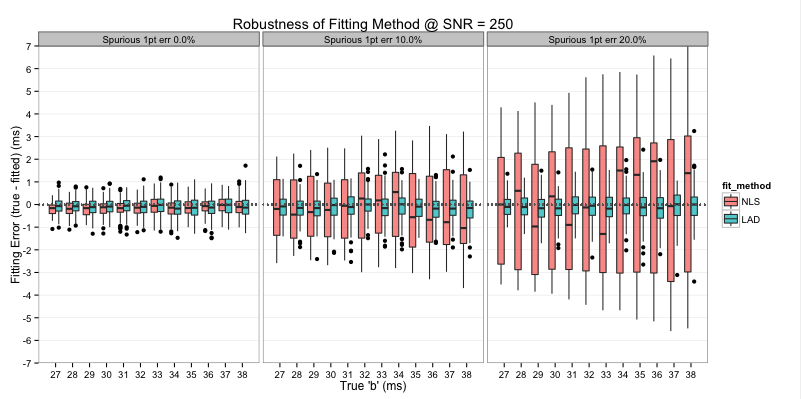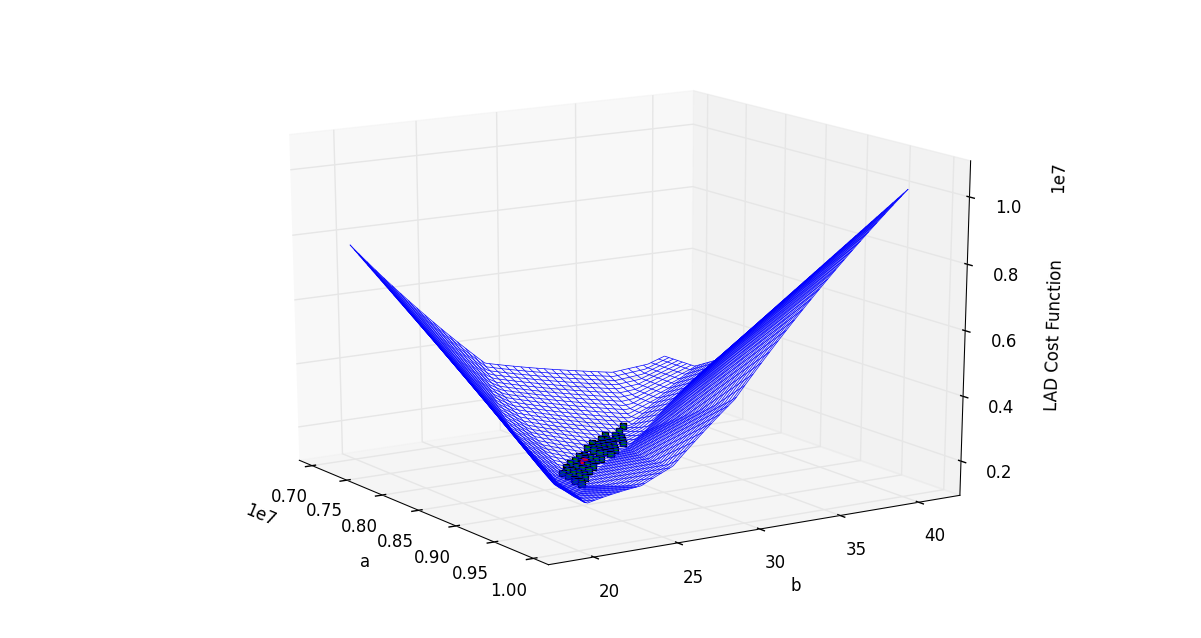I am fitting a single exponential decay formula with three parameters (a,b,c): y ~ $a \exp(-xb) + c$ using the LAD cost function: $ \min \sum |(y - f(x))| $. $x$ is in units of time (as is $b$), and $a$, $c$ are unitless. Measurements are taken far enough out in time that the last $y$ is effectively only noise from measurement process.
Sometimes we have data points that are corrupted by sporadic errors that are most definitely not normally distributed when they occur at all, so this method seems a very reasonable approach to use. I include an example using simulated data below:

Ignoring parameter $c$, I plot the two-parameter cost function graphically, and it is easy to see that there is a plane of points in the parameter space that minimizes the cost function (see figure). I have confirmed this for the three-parameter model by brute force searching the parameter space.

My questions is: Is there any way, given the data, the model and assuming I can find all of the reasonable minima, to choose one of those optimal parameter sets as the representative parameter set? Right now I am choosing the centroid of the hyperplane (if that's an appropriate term) of the minimizing parameters, and that's getting me extremely close to R -> quantreg -> nlrq's solutions with tau=0.5 in about 90% of the cases.
